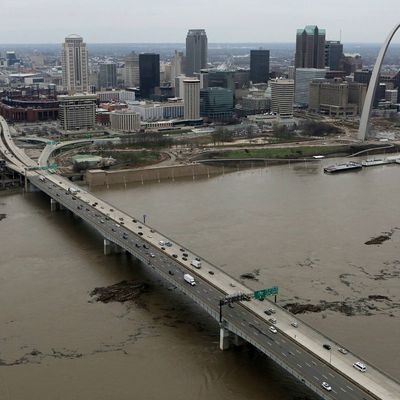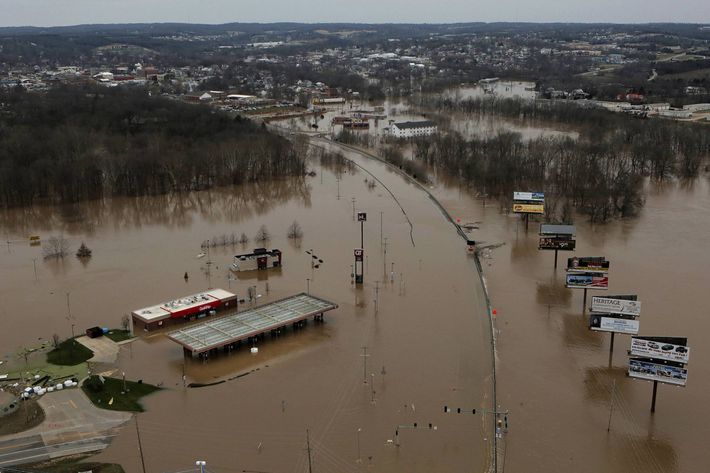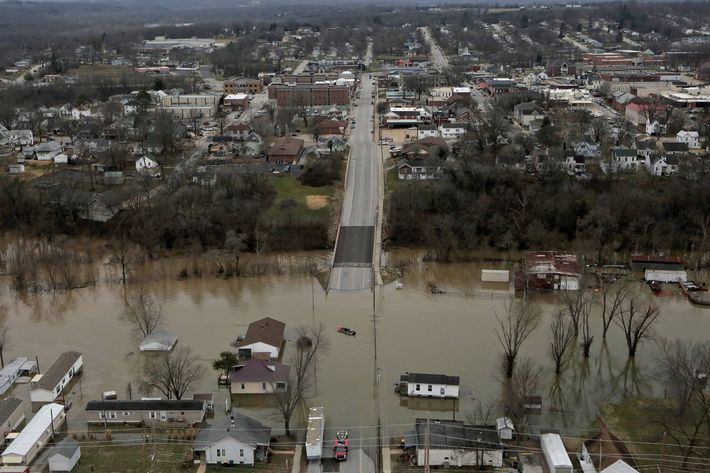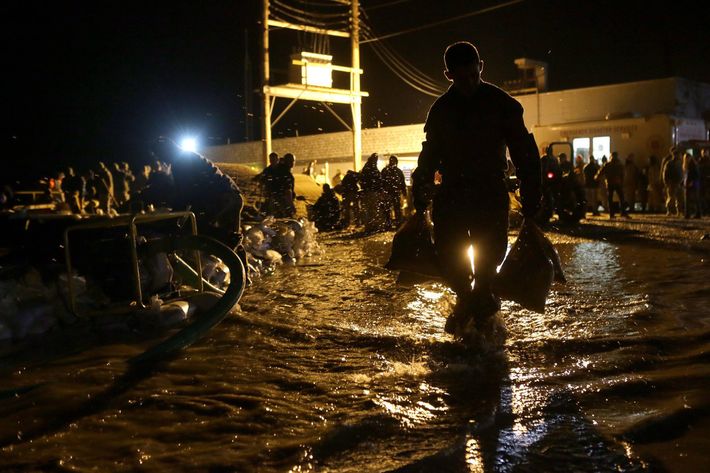
At least 13 people have died during the extreme weather conditions that have bombarded Missouri and Illinois the past few days. All but one of the deaths happened while people tried to drive their way out of the flood. Federal authorities have been keeping a close eye on 19 levees that could be breached or weakened by the historically high waters — worse than anything the region has seen in decades. One meteorologist told NBC News, “If a levee was to give way, the entire Mississippi would flood out. It would flood fields, homes and anything else in its path.”
Waste-treatment plants have started to fail, spreading gross sewage through the unwelcome water.

Many residents have been told to evacuate — a process complicated by all of the flooded roads and highways. On Wednesday, a 24-mile-stretch of Interstate 44 was closed and could stay closed until Friday, per the St. Louis Post-Dispatch. Parts of I-70 have also been closed. The Coast Guard also closed a section of the Mississippi River near St. Louis to barges. According to CBS News, the Mississippi River “is expected to crest at over 43 feet, close to its second highest level ever,” and many new rainfall records have been set.

At least one house just floated away.
“We have never seen water this high,” Missouri governor Jay Nixon told CNN.
The flooding becomes even weirder and more horrifying when you realize just how unseasonable it is. It’s only December, and most of these areas haven’t dealt with any snow yet. As the Washington Post notes, “this week’s flooding isn’t truly put into perspective until you consider that nearly all of the historic crests along the Mississippi have occurred during the spring melting season or the summer rainy months. Wintertime flooding to this extent is typically not possible simply because there is usually not enough moisture in cold, winter air to support such incredible rainfall totals.”
Usually this kind of flooding isn’t seen until April or May.
Things could get even worse as tributaries continue dumping their excess water into the Mississippi, and states further down the river’s path have started preparing for possible flooding, too. The National Weather Service has warned Baton Rouge and New Orleans that flooding could happen next month, and the area is getting ready for the possibility that spillways may have to be opened. According to the Baton Rouge Advocate, “The last time the spillway was opened in January was back in 1937, its first year of operation.” And, as Bloomberg notes, the stress and preparations won’t end after the water from this batch of floods makes its way to the Gulf: “There is still a winter’s worth of rain and snow coming, in part because of this year’s strong El Nino.”






























